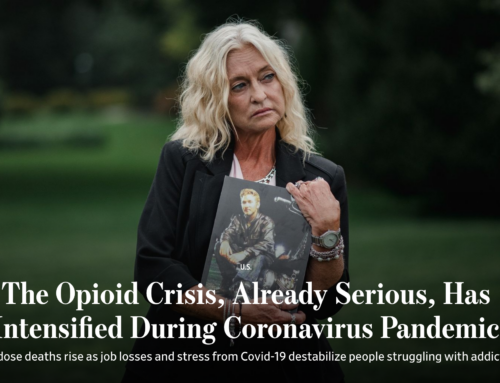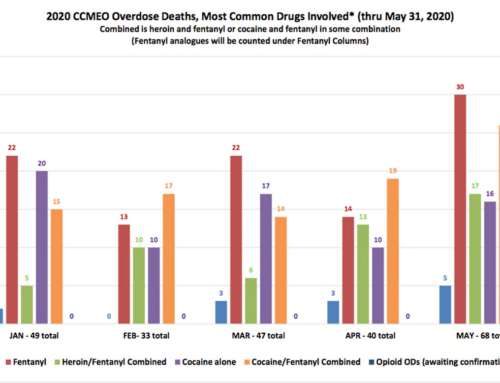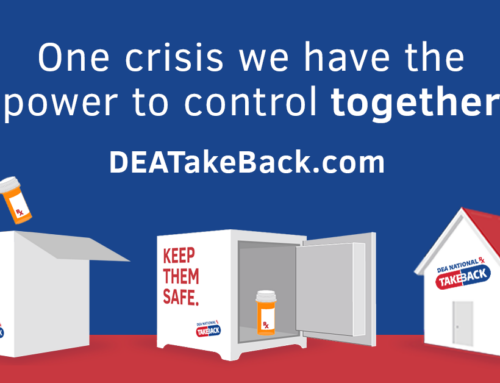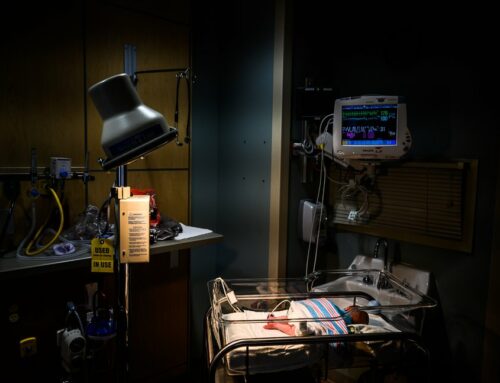CLEVELAND, Ohio — The number of deaths attributed to heroin and other opioids dropped in recent months in what medical and law enforcement officials say is the first sign of optimism that the fight against the deadly opioid epidemic might be working.
The decline comes after eight years where deaths climbed dramatically, caused by the wide availability of pain pills, heroin abuse and the emergence of synthetic opioids like fentanyl.
The drop in deaths began near the end of 2017, according to medical examiner records from the three of the hardest hit counties in Northeast Ohio.
Cuyahoga County had 98 overdose deaths attributed to opioids in the final three months of 2017. This came after the county averaged about 50 a month in the previous nine months of the year.
The first four months of 2018 saw 137 deaths, compared to 192 through during the same period in 2017 and 139 in 2016. In Cleveland, there were 64 deaths in the first three months of 2018 compared with 82 in 2017.
In two other counties viewed as bellwether areas by public officials, the decrease was more dramatic.
Summit County, the second largest county in the region, recorded 21 deaths in the first three months of 2018, compared to 58 in the same period of 2017, according to medical examiner records. The slowdown began there in November, when only five people died from opiate overdoses. The county used to see at least 20 deaths for most months, but the count has not hit double-digits in any of the first three months of 2018.
“We were just throwing everything at the wall to see what stuck when the bubble burst, but now we’re able to be more intentional about the work we do so we know where to put our resources,” Greta Johnson, the chief of staff for Summit County Executive Ilene Shapiro said.
Trumbull County, located about 50 miles east of Cleveland, is where officials have seen the highest rate of per capita opiate deaths in the Northeast Ohio. The number there dropped by almost half in 2018. There were 46 deaths between January-April 2017, and 21 in the same time frame this year.
Officials attribute the slowdown to at least five things:
- The widespread availability of the heroin overdose antidote naloxone
- A 28 percent decrease in Ohio doctors prescribing opiates across from 2012 to 2017
- A massive public awareness campaign
- Law enforcement’s response, which includes siphoning off drug supply networks and prosecuting dealers whose buyers die from overdosing
- Drug dealers are cutting less of the powerful synthetic opioids fentanyl or carfentanil into heroin and cocaine, to avoid prosecution for users’ deaths
Law enforcement officials offered one other grim explanation — that so many people have died from opioid abuse, that the rate of death slowed down on its own.
“This isn’t a victory lap,” said U.S. Attorney Justin Herdman, Northeast Ohio’s federal prosecutor who hosts monthly meetings on the opioid crisis with officials from the area hospitals, police and other officials battling the epidemic. “But it’s a trend that’s got enough time behind it that there’s definitely something going on here. ”
Widespread naloxone availability key
Public health officials, hospital administrators and law enforcement officials all pointed to the wide availability of naloxone, also known by its brand name Narcan, as the most important factor in the slowing death rates.
Most police officers, emergency medical technicians and firefighters carry it with them at all times and are able to revive people who overdosed, saving countless lives, officials said.
A public health initiative led by officials at the state, county and city levels has made naloxone available over the counter. MetroHealth gives its patients the antidote when they leave the emergency room after treatment for an overdose.
Cleveland police in 2014 established the Heroin Involved Death Investigations team that consists of seven full-time detectives. The team averaged about 20 calls to death scenes and 108 non-fatal overdose scenes per month in 2017. That decreased in the first four months to about 16 calls for fatal overdoses, and fewer than 50 visits to non-fatal overdose scenes, Cleveland Police Commander Gary Gingell said.
The drop coincided with an increase in the naloxone kits distributed by MetroHealth’s ProjectDawn initiative, which began in 2013.
“When you look at the number of reported uses in ProjectDawn, there’s definitely a correlation between the administration of those kits and the reduction in overall overdoses and fatal overdoses more significantly,” Herdman said.
Dr. Joan Papp, who leads ProjectDawn, said the hospital gave out 376 kits the first year. That number soared to 2,719 in 2017. They are on pace this year to distribute 3,993, she said.
Getting overdose victims into treatment
Officials also said they had initially struggled to get people who overdosed access to treatment. Papp said people are typically more willing to commit to treatment immediately following an overdose.
In 2017, Cleveland police’s HIDI team partnered with a few area detox organizations to find addicts a place to immediately start on their path to recovery.
Few took advantage of the opportunity. Of the 1,300 overdose victims the team encountered, about 50 took up the offer, Gingell said. That was most likely because people didn’t want police officers involved in their daily lives.
Gingell took the problem to Papp. Papp said they started a ground-breaking approach in December only used by a handful of hospitals across the country.
The hospital used money from the $6.3 billion 21st Century Cures Act that Congress passed in 2016 to hire Ascent ED, which supplies peer-support counselors stationed at all hours of the day at MetroHealth.
The 12 peer-support counselors go directly to the bedsides of people who overdose at the hospital. They make their first contact usually within a half-hour after the patient agrees to speak with the state-certified counselors, who are also recovering addicts.
The peer supporter talks with the patient, sometimes for hours, and tries to convince them to seek treatment. If they accept, the emergency doctors perform an addiction assessment and make recommendations on whether the person could better benefit from medication-assisted treatment or some form of in-patient treatment.
The hospital prescribes medication, including suboxone and buprenorphine, gives the user naloxone, and, if the patient wants to go to a treatment facility, the peer supporters order them an Uber and ride with them to the whatever treatment center has open beds.
Papp said when the program started in December she would have considered it a success to get 6 percent of overdose patients to agree to go directly to a facility. Of the 600 patients so far this year, 150 have agreed to get treatment, a success rate of 25 percent.
“It’s important because once they step out of the emergency department, all of those temptations come back,” Papp said. “If there isn’t someone with them kind of holding their hands, and reassuring them and getting them through the front door of the next provider, there’s always a risk that the connection lost and all that work is out the window. That’s really important.”
Gingell, the police commander, said he’d like to see that program expand to all of the area’s hospitals. Papp said she’s floated the idea to representatives of other hospital systems during their monthly meetings. She said they’ve been receptive thus far, but are looking for ways to pay for the program.
Looking forward
Herdman said prosecuting cases and disrupting drug distribution networks remain high on his to-do list for curbing the crisis. He also said keeping an eye on the rising number of methamphetamine overdoses is on his radar, with the possibility that some opiate users are transitioning to meth use.
He and other officials also said that more data sharing should be paramount looking to the future. Officers in Cleveland’s law enforcement community, including the city and surrounding suburbs, created a database that they, along with DEA agents, use to analyze trends.
But Herdman wants to see more data sharing between non-law enforcement agencies, hospitals and private entities dealing with the crisis. Herdman said difficulties arise because of people’s privacy rights. Hospitals can only give out certain information on patients. He said he’d like to see a discussion about sharing more data so law enforcement and public health officials can respond more quickly to a spike in overdoses.
That poses problems. Hospitals are prohibited from divulging specific information regarding patients under federal law. Herdman said he’d like for hospitals to be able to tell law enforcement when there are spikes in overdoses so investigators are able to jump on the problem quickly and avoid deaths from bad batches of drugs. He stressed that if that were the case, that no one who suffered from an overdose would be arrested for drug possession.
He said too often, officials learn of bad batches of heroin or cocaine laced with fentanyl only after a cluster of people die and their blood work is tested by county medical examiners. By then it’s too late. Herdman said he’d like to be able to alert both the public and law enforcement of bad batches of drugs in real-time, instead of after-the-fact.
“That’s really the one area that’s beyond my power to do anything about it, but I want to be part of the conversation about having thoughtful sharing of data that allows all of us to target our resources,” Herdman said. “Everything is kind of siloed right now. There have been really good attempts to break through some of those barriers, but it hasn’t been done in a way that is really going to put us where we need to be to address the crisis. So we’re going to keep working on that.”
Officials agreed that naloxone availability remains most important and that widespread use of peer-support networks could be vital to getting people into treatment and keeping people alive. The availability of treatment options is also something Papp said she’d like to see.
She also said that more area health-care providers need to be able to prescribe medication that helps opiate addicts, like suboxone and buprenorphine. To do so, those providers need specialized training and a special license from the DEA. MetroHealth hosts training for the license and Papp said she’s seen about 75 new providers have come in for training recently.
Papp said above all, they’ve learned that a comprehensive approach is the one thing that might help consistently chip away at the crisis.
“If we focus on one area and not the others we’re not going to solve this epidemic,” she said. “Safe prescribing, harm reduction with naloxone and increased access to treatment. I would stress all three of those things need to be there and collaborating with your partners and peers in the community. None of us are going to fix this alone.”
ORIGINAL ARTICLE: https://www.cleveland.com/metro/index.ssf/2018/05/have_opioid_deaths_in_northeas.html





